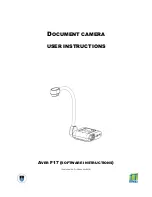
V1.02
Thom Hogan’s Complete Guide to the Nikon D300
Page 700
If the problem area doesn’t come off with brushing,
then use a Sensor Swab wet with E2 solution (see
http://www.photosol.com
)
160
.
12.
Remove your tools from the camera and turn the
camera off. The shutter curtain should close and the
mirror should return to its normal position.
13.
Remount the lens on the camera.
14.
Unplug the EH-5a AC adapter.
Note: Anecdotal evidence seems to indicate that dust is more
easily removed from a cold sensor. I wouldn’t advocate
putting your D300 in a refrigerator prior to cleaning,
though, as condensation becomes an issue. It probably is
wise to avoid cleaning the camera immediately after it has
been used, though, as the components are probably still
warmer than the surrounding environment. Also, if you can
postpone a cleaning until you’re in a cooler environment
(e.g. an air-conditioned building in warm climes), you’ll
probably find it easier to clean your sensor.
If these methods fail to remove the dust, you’ll need to have a
Nikon service center clean your camera. Remember, Nikon
specifically disclaims use of any method that touches the filter
array on top of the sensor. I’m describing the methods that
most of us pros have resorted to because we simply can’t
keep returning the camera to Nikon for cleaning every time
our sensors get dirty (we’d never have use of our cameras!).
Caution: If you use
Lock mirror up for cleaning
with a fully
charged battery and no AC power supply, the camera will
start to shut down when battery power reaches three bars
in the top LCD indicator (a full battery shows five bars). In
theory, the camera beeps and blinks the Autofocus Assist
160
Yes, Nikon’s documentation says don’t touch the sensor. But Sensor Swabs are
similar to the method they use to clean the sensor. Heck, Nikon even sells cleaning
kits in Japan. Don’t get the cloth too wet [you’ll leave streaks], and don’t use force in
cleaning [you could grind dirt into the filter face or break the filter]. And, again, I
won’t pay to have your sensor replaced if you use this technique and damage your
camera. If you’re not comfortable using this technique at your own risk, then don’t
use it.
















































